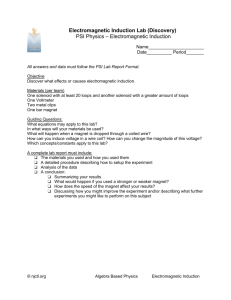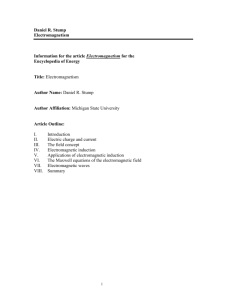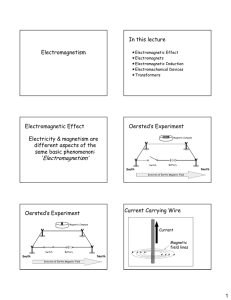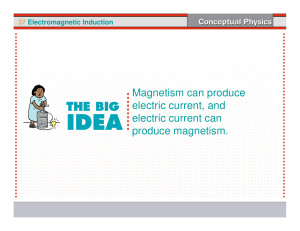CHAPTER 22 ELECTROMAGNETIC INDUCTION AND
advertisement
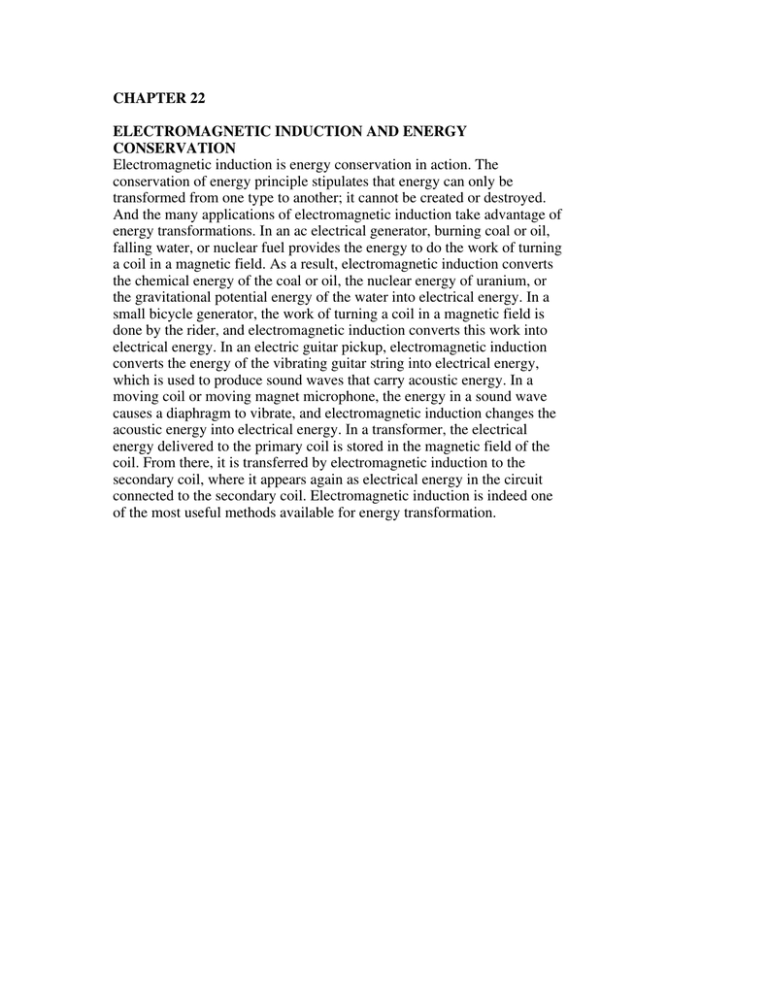
CHAPTER 22 ELECTROMAGNETIC INDUCTION AND ENERGY CONSERVATION Electromagnetic induction is energy conservation in action. The conservation of energy principle stipulates that energy can only be transformed from one type to another; it cannot be created or destroyed. And the many applications of electromagnetic induction take advantage of energy transformations. In an ac electrical generator, burning coal or oil, falling water, or nuclear fuel provides the energy to do the work of turning a coil in a magnetic field. As a result, electromagnetic induction converts the chemical energy of the coal or oil, the nuclear energy of uranium, or the gravitational potential energy of the water into electrical energy. In a small bicycle generator, the work of turning a coil in a magnetic field is done by the rider, and electromagnetic induction converts this work into electrical energy. In an electric guitar pickup, electromagnetic induction converts the energy of the vibrating guitar string into electrical energy, which is used to produce sound waves that carry acoustic energy. In a moving coil or moving magnet microphone, the energy in a sound wave causes a diaphragm to vibrate, and electromagnetic induction changes the acoustic energy into electrical energy. In a transformer, the electrical energy delivered to the primary coil is stored in the magnetic field of the coil. From there, it is transferred by electromagnetic induction to the secondary coil, where it appears again as electrical energy in the circuit connected to the secondary coil. Electromagnetic induction is indeed one of the most useful methods available for energy transformation.

